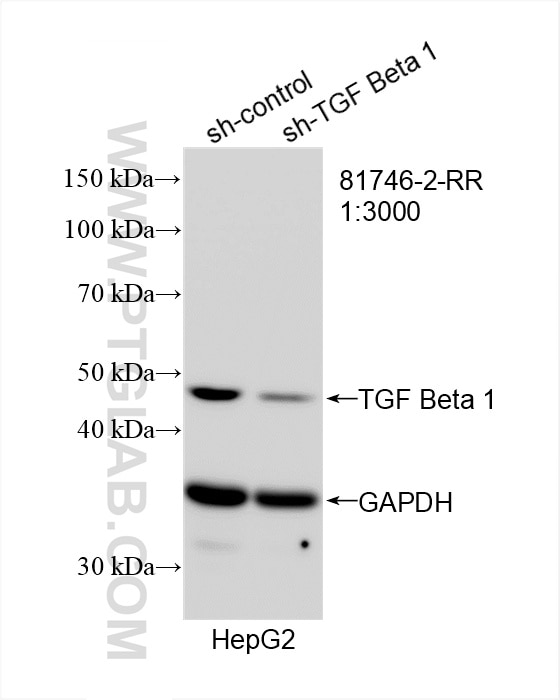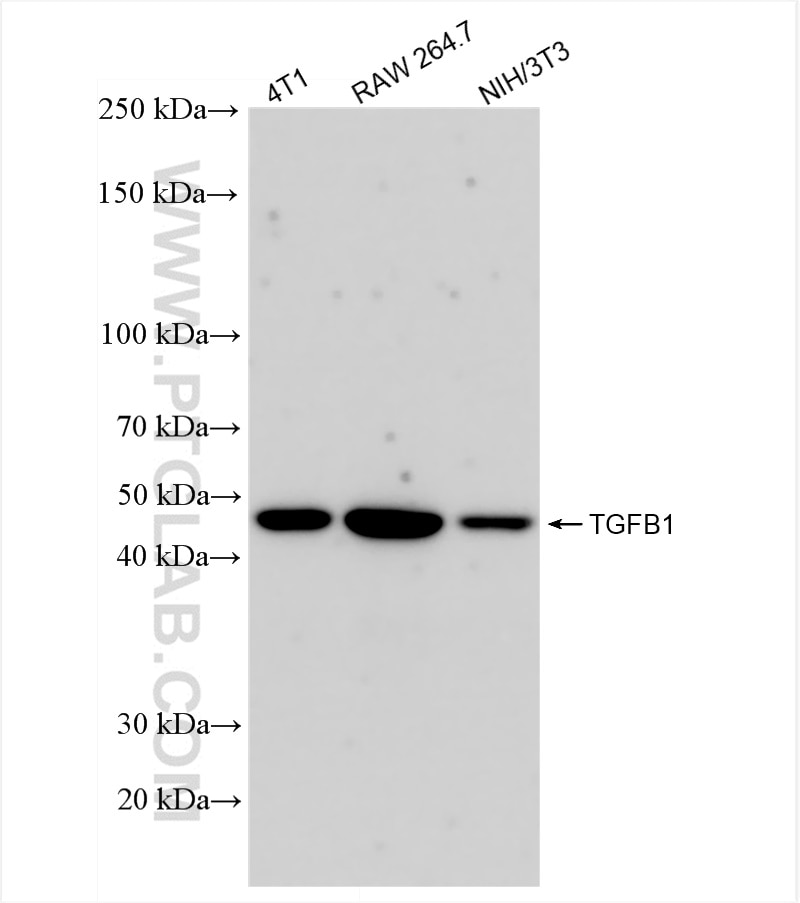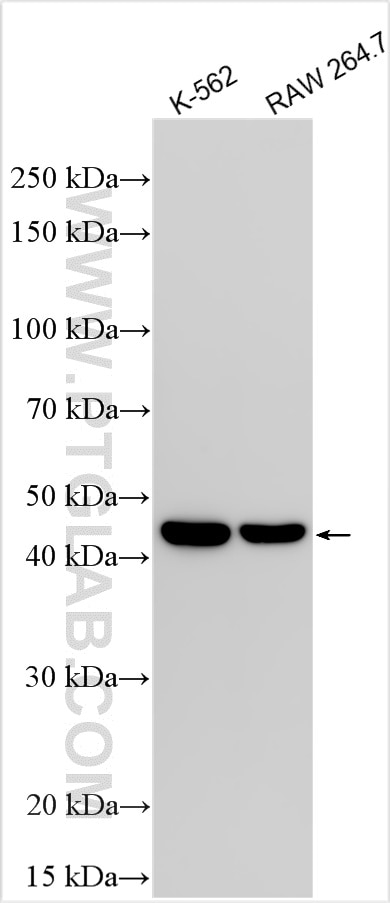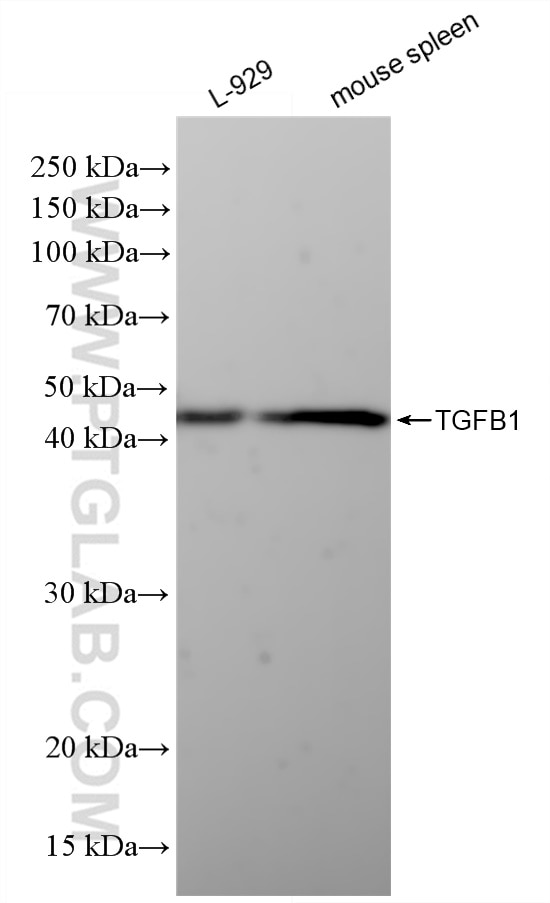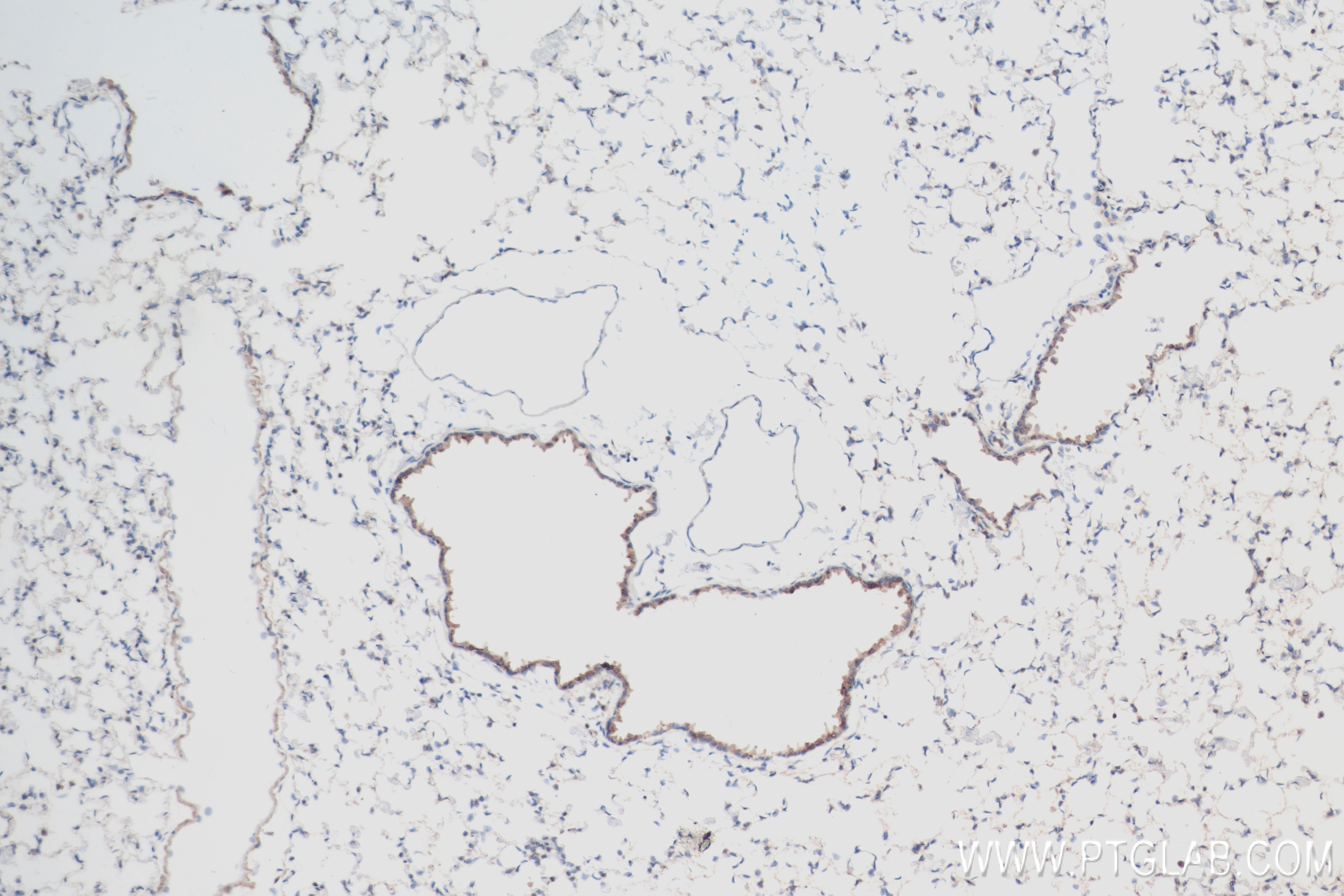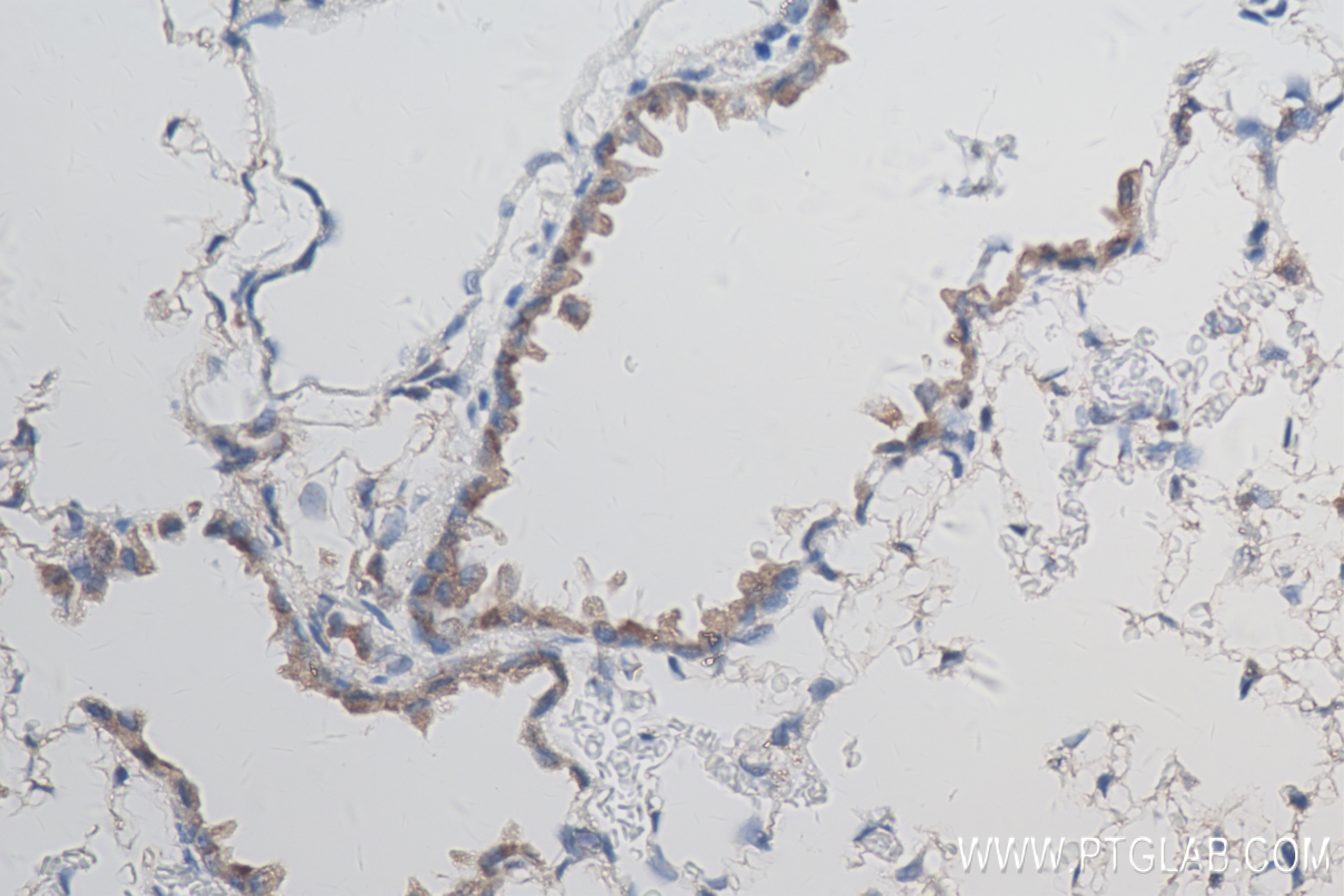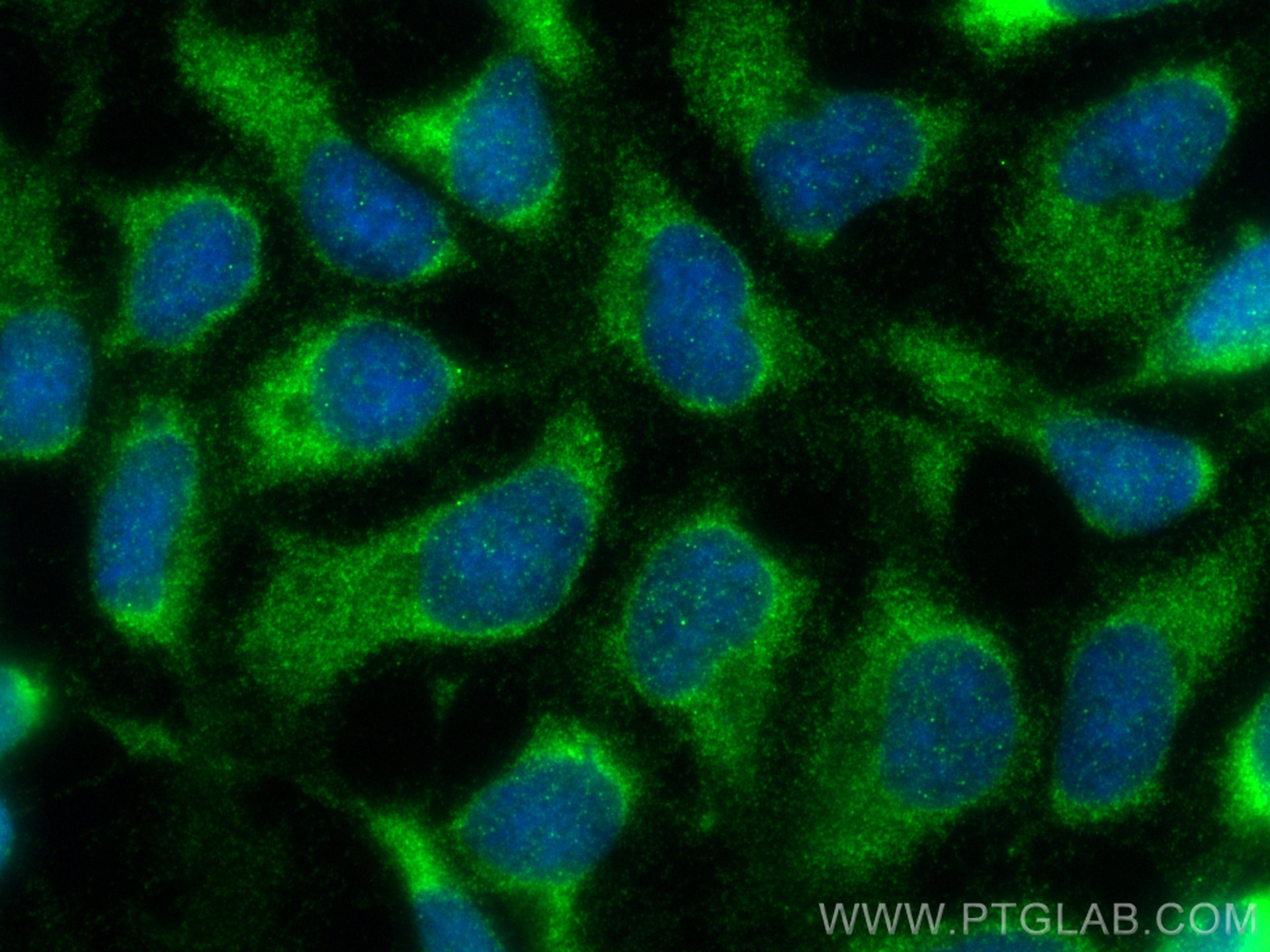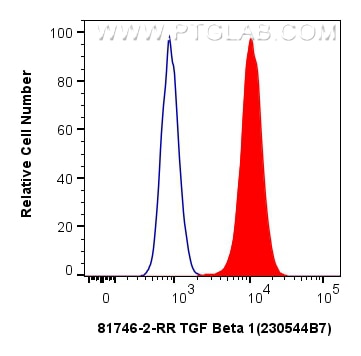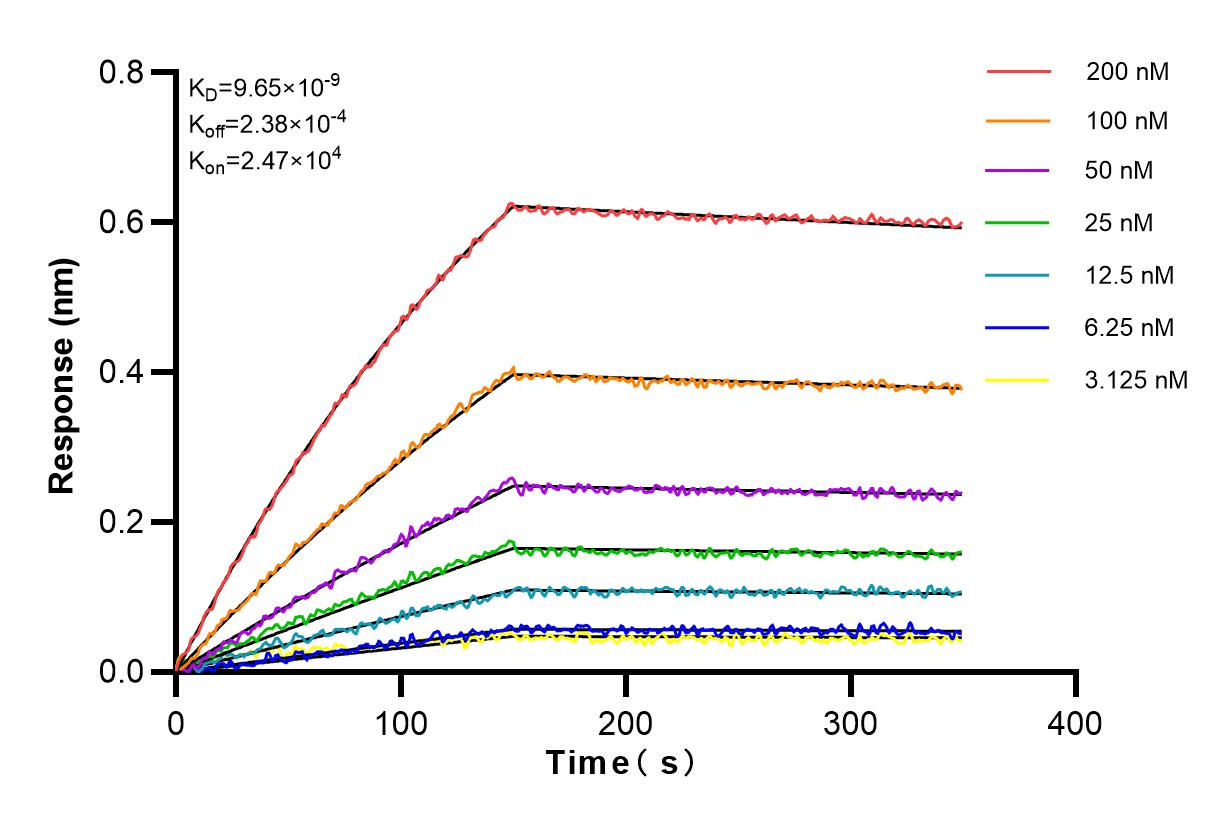Validation Data Gallery
Tested Applications
Recommended dilution
| Application | Dilution |
|---|---|
| It is recommended that this reagent should be titrated in each testing system to obtain optimal results. | |
Product Information
81746-2-PBS targets TGF Beta 1 in WB, IHC, IF/ICC, FC (Intra), Indirect ELISA applications and shows reactivity with human, mouse, rat samples.
| Tested Reactivity | human, mouse, rat |
| Host / Isotype | Rabbit / IgG |
| Class | Recombinant |
| Type | Antibody |
| Immunogen |
CatNo: Ag13591 Product name: Recombinant human TGFB1 protein Source: e coli.-derived, PET28a Tag: 6*His Domain: 13-253 aa of BC000125 Sequence: LPLLWLLVLTPGRPAAGLSTCKTIDMELVKRKRIEAIRGQILSKLRLASPPSQGEVPPGPLPEAVLALYNSTRDRVAGESAEPEPEPEADYYAKEVTRVLMVETHNEIYDKFKQSTHSIYMFFNTSELREAVPEPVLLSRAELRLLRLKLKVEQHVELYQKYSNNSWRYLSNRLLAPSDSPEWLSFDVTGVVRQWLSRGGEIEGFRLSAHCSCDSRDNTLQVDINGFTTGRRGDLATIHGM 相同性解析による交差性が予測される生物種 |
| Full Name | transforming growth factor, beta 1 |
| Calculated molecular weight | 44 kDa |
| Observed molecular weight | 44 kDa |
| GenBank accession number | BC000125 |
| Gene Symbol | TGFB1 |
| Gene ID (NCBI) | 7040 |
| Conjugate | Unconjugated |
| Form | |
| Form | Liquid |
| Purification Method | Protein A purfication |
| UNIPROT ID | P01137 |
| Storage Buffer | PBS only{{ptg:BufferTemp}}7.3 |
| Storage Conditions | Store at -80°C. |
Background Information
TGF Beta 1 (TGF-β1) is a pleiotropic cytokine and a member of the TGF-β superfamily (including TGF-β1, TGF-β2, and TGF-β3). It is encoded by the TGFB1 gene and acts as a secreted protein involved in controlling cell growth, proliferation, differentiation, and apoptosis. TGF-β1 is produced by various cell types (e.g., platelets, lymphocytes, macrophages, epithelial cells, and inflammatory cells) and is secreted as a precursor requiring proteolytic activation to yield the mature, biologically active peptide. TGF-β1 plays crucial roles in immune regulation, wound healing, fibrosis, and tissue remodeling (including cardiac injury and fibrosis). It also influences cancer progression by promoting epithelial-to-mesenchymal transition (EMT) and metastasis in tumors.

